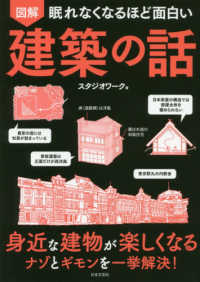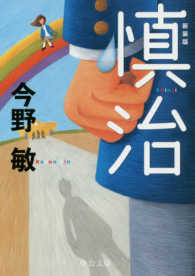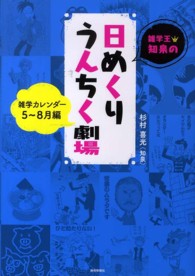- ホーム
- > 洋書
- > ドイツ書
- > Social Sciences, Jurisprudence & Economy
- > Education Science / Pedagogic
- > general surveys & lexicons
基本説明
Written in simple, straightforward language, this book is a writing guide that goes beyond grammar and style by demonstrating how to pull together the information needed for each section of a polished scientific paper. The second edition includes more examples, advice on publishing in online journals, software suggestions, and updated references.
Full Description
An observation such as 'children have 20 deciduous teeth' is not a fact, and, by itself, it is not acceptable as a scientific statement until its terms are explained: scientifically, 'children have 20 deciduous teeth' must be accompanied by definitions and qualifiers.








